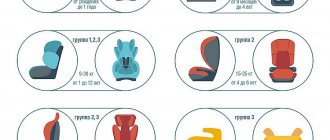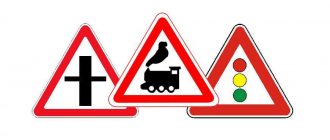Fire, explosion, leakage of radioactive substances - these are the possible damages that can result from improper transportation of dangerous goods. To protect people and the environment, developed countries have developed regulations for the transportation of hazardous substances for all types of transport. In this article we will describe the rules and requirements for the transportation of dangerous goods by land road transport in Russia, consider the main nuances, violations and liability of legal entities for violations.
- What is dangerous goods
- Classes of dangerous goods
- Who has the right to transport dangerous goods?
- Rules for the transportation of dangerous goods by road
- Documents required for the transport of dangerous goods
- Requirements for drivers to transport dangerous goods
- Requirements for vehicles for transportation of dangerous goods
- Permission to drive a vehicle with dangerous cargo
- Violations and fines for incorrect transportation of exhaust gases
- Payment of fines for dangerous goods at a discount
What is dangerous goods
Dangerous cargo is a substance that can harm the health and life of people, the environment and material assets in the event of an accident during its transportation.
The transport of dangerous goods is regulated by the European Agreement concerning the International Carriage of Dangerous Goods by Road (ADR or ADR).
The list of hazardous substances includes more than 3 thousand items. Each such substance has a special identification number. The list is divided into classes.
In Russia, the state standard GOST 19433-88 is in force, which divides dangerous goods into classes according to the level of danger. The requirements of this standard are developed in accordance with ADR.
What is dangerous goods?
A load is considered dangerous if, if handled incorrectly, the following consequences may occur:
- explosion;
- fire;
- destruction of the vehicle that transports it;
- material damage;
- causing harm to the environment;
- people getting injured;
- death of animals.
However, transportation of such goods is a fairly common service, since enterprises often need to transport hazardous substances from one place to another.
According to the state standard, the following should be considered dangerous goods:
- compressed, liquefied or dissolved gases;
- caustic and corrosive compounds;
- elements with a high explosion hazard;
- radioactive elements;
- liquids that ignite easily;
- substances with toxic or infectious properties;
- compounds capable of spontaneous combustion;
- peroxides.
For each group of substances described above, there are strict rules regarding their storage and movement. They can be found in GOST for the transport of dangerous goods, as well as in the international agreement on the road transport of hazardous materials. Compliance with statutory standards is not mandatory in only two cases: if substances are moved within the plant that produces them, according to the technological scheme; and if the transportation is carried out by authorized bodies.
Classes of dangerous goods
class 1 - explosive materials; class 2 - compressed, liquefied and dissolved gases under pressure; class 3 - flammable liquids; class 4 - flammable solids, spontaneously combustible substances, substances that emit flammable gases when interacting with water; class 5 - oxidizing substances and organic peroxides; class 6 - toxic substances and infectious substances; class 7 - radioactive materials; class 8 - caustic and (or) corrosive substances; class 9 - other hazardous substances.
Each class is also assigned a subclass, category and degree of danger. Not every carrier can transport these substances.
Check the organization's fines
Types of dangerous goods
The state standard specifies the following types of dangerous goods:
- Gases that have been compressed, liquefied or dissolved;
- Compounds of caustic or corrosive type;
- Explosive elements;
- Radioactive substances;
- Highly flammable liquids;
- Substances that have a toxic or infectious effect;
- Self-igniting compounds;
- Peroxides.
Classes of dangerous goods and their corresponding markings
Each type of dangerous goods has regulated standards for the transportation and storage of substances. The standards are prescribed in GOST and the international agreement ADR. The requirements do not apply only to cases where transportation occurs within the enterprise that produces hazardous compounds. It is only necessary to comply with the technological scheme. Also, transportation by security authorities does not require compliance with all the provisions described.
Rules for the transportation of dangerous goods by road
Transportation of dangerous goods must be organized taking into account the requirements established by the following regulations:
- European Agreement concerning the International Carriage of Dangerous Goods by Road of September 30, 1957 (ADR);
- Federal Law of November 8, 2007 No. 257-FZ “On highways and road activities in the Russian Federation and on amendments to certain legislative acts of the Russian Federation”;
- Rules for the transportation of goods by road, approved. Decree of the Government of the Russian Federation dated April 15, 2011 No. 272;
- Rules for ensuring transportation safety, approved. by order of the Ministry of Transport of Russia dated January 15, 2014 No. 7;
- Order of the Ministry of Transport of the Russian Federation dated July 4, 2011 No. 179 “On approval of the Procedure for issuing a special permit for the movement of a vehicle transporting dangerous goods on roads.”
- High-risk cargo can only be transported with a special permit (more on this below).
- The vehicle must have a yellow or orange flashing light on.
- The vehicle must comply with the requirements of the Technical Regulations of the Customs Union “On the safety of wheeled vehicles” (TR CU 018/2011) and section 9 of ADR.
- Vehicles transporting hazardous substances are equipped with a “dangerous cargo” identification sign.
- The speed of movement must be established when agreeing on transportation.
- The driver must undergo special training and obtain a certificate of approval to transport dangerous goods.
- The carrier is obliged to comply with the precautions outlined in Chapter 1.10. ADR.
An example of a car's front and rear designation:
Special markings on the sides of tanks, as well as on the sides of vehicles and containers:
Classification of dangerous goods and their marking
Dangerous goods include toxic, explosive, oxidizing, radiation, flammable liquids, gases, pesticides, peroxides, etc. – according to the UN, more than 3,500 items (just below you can download the full list of dangerous goods in alphabetical order, the ADR agreement and GOST 19435-88).
According to the GOST 19435-88 classification, based on the European Agreement on the International Carriage of Dangerous Goods by Road (ADR), they are usually divided into 9 classes:
- Class I - chemical compounds that can ignite or explode, or devices containing such substances (for example, cartridges for shotguns and pistols, some fireworks, safety fuses).
Class 1 dangerous goods signs: Subclasses 1.1-1.3 Subclasses 1.4-1.6 - Class II – any gases (liquefied or natural).
Class 2 dangerous goods labeling depends on the type of gas: Flammable gases Non-flammable non-toxic gases Toxic gases
- Class III - liquids that can easily ignite or emit flammable vapors (for example, acetone, adhesives, diesel fuel, varnishes, alcohols, solvents, gasoline, kerosene, paints, oil). Class 3 exhaust markings:
- Class IV - flammable solids and materials (except for those included in class 1) that are capable of igniting during transportation when interacting with external sources, moisture, heating, or as a result of spontaneously occurring chemicals (for example, sulfur, white and yellow phosphorus, lithium). Includes 3 subclasses. Marking of class 4 dangerous goods: Subclass 4.1
Subclass 4.2Subclass 4.3
- Class V - organic peroxides and oxidizing substances that can release oxygen, and therefore support the combustion process, which, when reacting with other substances, can lead to an explosion or fire.
2 subclasses include with the following markings: Subclass 5.1 Subclass 5.2 - VI – infectious (for example, bacteria and viruses, diagnostic samples) and toxic (for example, nicotine, pesticides, arsenic, cyanide) substances and materials that can cause intoxication or death.
Includes 2 subclasses with the following markings: Subclass 6.1 Subclass 6.2 - VII – radioactive substances and materials (cobalt, cesium, iodine, uranium 233, plutonium 239, etc.). Dangerous goods of class 7 have an emission rate of radionuclide radioactivity of more than 70 kBq/kg. Dangerous goods signs:
- VIII – corrosive substances and materials (cause corrosion when interacting with metal, for example, alkalis) and caustic liquids that, if ingested, cause damage to open areas of the body (respiratory tract, skin, mucous membranes), for example, mercury, sulfuric acid, acid batteries. Hazard class 8 marking:
- IX – other hazardous materials and substances, although not particularly dangerous, require careful and careful handling during transportation (for example, dry ice, magnetized materials, foaming polymer resin). Dangerous goods signs:
A complete alphabetical list of all dangerous goods indicating the class (and subclass) of hazard, GOST 19435-88 and ADR European Agreement can be downloaded from the links below.
To transport dangerous goods, road transport must be equipped and marked in accordance with the requirements of the relevant regulatory documents (ADR, Rules for the Transportation of Dangerous Goods, Charter of Road Transport of the Russian Federation).
Documents required for the transport of dangerous goods
- special permit for the transportation of dangerous goods by road (for high-risk goods);
- certificate of vehicle approval for the transportation of dangerous goods;
- certificate of driver training for the transportation of dangerous goods;
- instructions for the driver, responsible persons, accompanying person on the rules of transportation;
- waybill with cargo markings;
- cargo safety data sheet;
- waybill;
- contract of carriage.
Checking fines for legal entities. persons
Try for free
Requirements for containers of dangerous goods
Safety requirements for the transport of dangerous goods vary depending on the type of substance. For example, if chemicals are transported, it is necessary to place them in containers with which they will not react with the material and will not destroy it. It can be glass, plastic, metal or cardboard.
There are several packaging requirements that are relevant regardless of the type of cargo:
- compliance with state standards;
- tightness;
- resistance to moisture and mechanical stress;
- impenetrability;
- reliable fastening;
- marking according to GOST and ADR rules.
Requirements for drivers to transport dangerous goods
To drive a car with dangerous cargo, the driver must complete a training course at a specialized training center and receive an ADR certificate of preparation for the carriage of dangerous goods of international standard.
The certificate contains information about exactly what hazard class the driver can transport. It depends on what training course you completed.
Training to transport hazardous substances can be completed by a driver with at least three years of continuous driving experience in the relevant category.
Without an ADR certificate, driving a vehicle to transport hazardous substances is prohibited.
Transportation route
You must first obtain permission to transport dangerous goods, and then the route is agreed upon. Most often, transportation of dangerous goods requires transfer and verification of the route to the traffic police. It is necessary to obtain ADR for the transport of dangerous goods if:
- Transportation occurs in a convoy of 3 or more vehicles;
- Transportation of especially dangerous cargo;
- Driving through areas with poor traffic conditions or bad weather conditions.
Government authorities are trying to minimize routes through cities. It is better to use bypass routes. As a last resort, the route should exclude places with large crowds of people.
How to obtain permission to drive a vehicle with exhaust gas from the traffic police? – It is necessary to submit the following documents:
- A document confirming compliance with vehicle requirements;
- Pre-formed route. Amendments may be made to inspections;
- When transporting highly hazardous substances, an additional permit is required.
Drawing up a route is necessary for any transportation of exhaust gas, but it is not always necessary to notify the inspectorate about this. It is important to adhere to the basic rules of route formation:
- Traffic should not pass through public recreation areas and natural customers. Movement up to objects of cultural value is prohibited;
- It is prohibited to drive close to large factories, especially those that produce such hazardous substances;
- The route must contain information about stopping places, refueling, parking, etc.
You must have 3 copies of the route, which are kept by the driver (or accompanying person), by the company and in the archives of the traffic police. It is also possible to adjust the movement plan due to some circumstances. Information about changes must be included in all documents.
Requirements for a vehicle to transport dangerous goods
Dangerous goods can only be transported on special vehicles that are manufactured or retrofitted in accordance with regulatory documents.
You must also first obtain a certificate of approval of the vehicle for the transportation of hazardous substances.
On January 10, 2021, the updated regulations for issuing such a certificate came into force.
To obtain permission to drive a vehicle, you need:
- Contact the traffic police department with the following documents:
- statement;
- identification document of the applicant;
- power of attorney or agreement if the applicant is a representative of the owner of the vehicle;
- tank type approval certificate (for tanks);
- certificate of testing and (or) inspection of the tank indicating the list of substances approved for transportation (for tanks).
Until January 1, 2021, it is not necessary to present certificates for tanks (Resolution of the Government of the Russian Federation of March 16, 2021 No. 285).
- Provide the vehicle for visual inspection.
The official will check it for compliance with the requirements of the legislation of the Russian Federation, the requirements of ADR and the information specified in the documents.
- Receive a certificate of admission.
According to clause 20 of the regulations, the procedure should not take more than 3 hours.
There is no state duty or other payment, so obtaining permission to transport dangerous goods is free.
The issuance of a certificate may be refused on the basis of:
- unreliability of information in the submitted documents;
- lack of information about the passed technical inspection at EAISTO;
- failure to present the car for inspection;
- unauthorized changes to the vehicle design;
- discrepancies in vehicle markings (body number, engine number, etc.).
The certificate is valid for 6 months. In this case, the validity period of the certificate cannot exceed the validity period of the technical inspection.
For example. The technical inspection will expire in three months. The permit will also be issued for 3 months. If the next technical inspection is due in eight months, the permit will be valid for 6 months.
Permission to drive a vehicle with dangerous cargo
Transportation of dangerous goods classified as high-risk goods according to the European Agreement on the International Carriage of Dangerous Goods by Road (ADR) is permitted with a special permit (clause 1.1 of Article 31 of the Federal Law of November 8, 2007 N 257-FZ).
The list of high-risk cargo is presented in Table 1.10.5. ADR. Such cargo includes, for example:
- explosives and products (pyrotechnics, trinitrotoluene, hexogen);
- flammable liquids (acetone, gasoline, ethanol, kerosene, acids);
- flammable gases (oxygen, natural gas);
- liquid oxidizing agents (hydrogen peroxide, ammonium nitrate, potassium permanganate);
- toxic substances (carbamate-based pesticide);
- radioactive materials (products made from natural uranium, objects with surface radioactive contamination);
- corrosive substances (sulfuric acid, liquid acid batteries).
You can obtain permission to transport especially dangerous goods for a car that was previously included in the register of categorized vehicles of Rosavtodor (Article 31 of the Federal Law of November 8, 2007 N 257-FZ).
The procedure for issuing a special permit is established by Order of the Ministry of Transport of the Russian Federation dated July 4, 2011 No. 179. A permit is issued at the Rostransnadzor office at the place of registration of the applicant. You can send an application with copies of documents by mail or fill it out on the government services portal. A sample application is in Appendix No. 2 to the Order.
List of documents attached to the application:
- a copy of the STS or car rental agreement;
- a copy of the certificate of approval of the vehicle for the carriage of dangerous goods;
- a copy of the driver’s certificate of approval to transport dangerous goods;
- power of attorney, if it is not the owner of the vehicle who is applying, but his representative.
In addition, you need to provide a diagram of the transportation route with parking and gas stations. As well as information about the cargo being transported: name, description, class, UN number.
The authorized body verifies the completeness and accuracy of the information. Checks compliance of technical characteristics of transport with safety requirements.
As a result, the owners of the roads along which the route passes are sent an application for approval or the issuance of a permit is refused.
Reasons why a permit may be refused:
- the route does not pass along federal roads;
- non-compliance with the requirements of ADR to ensure the safety of transportation of dangerous goods;
- not all documents are presented or they are not reliable;
- There is no information about the inclusion of the vehicle in the register of categorized vehicles.
State duty in accordance with paragraph 111 of Art. 333.33 of the Tax Code of the Russian Federation will be 1300 rubles.
Compliance with the rules for the transportation of dangerous goods is monitored by the State Traffic Inspectorate and Rostransnadzor. Violators bear administrative liability.
Transportation of goods of hazard class 9. Features according to domestic legislation
I. Regulatory framework
International transportation of dangerous goods, including export-import and transit transportation of dangerous goods across the territory of the Russian Federation, is carried out in compliance with the rules and regulations established by international conventions and intergovernmental agreements to which the Russian Federation is a party. When carrying out international transport of hazardous waste, it is recommended to be guided by the requirements of the “Basel Convention on the Control of Transboundary Movements of Hazardous Wastes and Their Disposal” of March 22, 1989 and the European Agreement of September 30, 1957 “On the International Transport of Dangerous Goods” (hereinafter referred to as ADR Download : https://www.unece.org/fileadmin/DAM/trans/danger/publi/adr/adr2015/ECE_TRANS_242_VolII_Web.pdf) In domestic law, these transportations are regulated by the Civil Code of the Russian Federation, Order of the Ministry of Transport of August 8, 1995 No. 73 “ On approval of the rules for the transportation of dangerous goods by road" (hereinafter referred to as the Order), the Charter of road transport, approved by Resolution of the Council of Ministers of the RSFSR dated January 8, 1969 N 12, the Rules for the transportation of goods by road, approved by the Ministry of Road Transport of the RSFSR on July 30, 1971, the Rules of the Road movements approved by Resolution of the Council of Ministers - Government of the Russian Federation of October 23, 1993 N 1090, Instructions for ensuring the safety of the transportation of dangerous goods by road, approved by the USSR Ministry of Internal Affairs on September 23, 1985.
II. Regulation according to domestic legislation.
Peculiarities.
1. Cargoes of hazard class 9 do not require compliance with the rules on permitting transportation.
2. Transportation of dangerous goods by road under Russian law is carried out on the basis of a contract of carriage concluded in accordance with current legislation.
3. The heads of motor transport organizations are responsible for selecting persons to accompany dangerous goods and instructing them.
4. The order also provides for special requirements for the marking of dangerous goods (GOST 14192-77 “Marking of goods”).
5. Vehicles transporting dangerous goods must in no case include more than one trailer or semi-trailer.
Possible approvals: The development of a route for the transportation of dangerous goods is carried out by the motor transport organization performing this transportation.
The selected route is subject to mandatory approval by the traffic police departments of the Ministry of Internal Affairs of Russia in the following cases:
1. When transporting “particularly dangerous goods”
2. When transporting dangerous goods in difficult road conditions (in mountainous areas, in difficult meteorological conditions (ice, snowfall), in conditions of insufficient visibility (fog, etc.)) (risk is possible)
3. When transporting in a convoy of more than 3 vehicles traveling from the place of departure to the place of destination (risk is possible).
The procedure for approval in the event of a risk: the motor transport organization is obliged to submit the following documents to the territorial divisions of the State Traffic Inspectorate of the Ministry of Internal Affairs of Russia at least 10 days before the start of transportation:
1. Developed transportation route according to the established form in 3 copies. (Appendix 7.11 of the Order);
2. Certificate of approval of the vehicle for the transportation of dangerous goods;
3. For “especially dangerous goods”, additionally - a special instruction for the transportation of dangerous goods, submitted by the consignor (consignee), and a permit for the transportation of goods issued by the Ministry of Internal Affairs of the Russian Federation at the location of the consignor (consignee).
Violations and fines for incorrect transportation of exhaust gases
As noted by traffic police officers, the most common violations in the field of transportation of dangerous goods are non-compliance of the vehicle design with the requirements and the lack of permits.
Liability for these violations and failure to comply with other requirements for the transportation of hazardous substances is established by Article 12.21.2 of the Administrative Code.
Responsibility is provided for the transportation of dangerous goods in the absence of:
- driver training certificates;
- vehicle approval certificates;
- special permission for transportation;
- emergency information card;
- compliance of the vehicle design with the requirements for the transit of dangerous goods;
- danger signs;
- emergency response equipment;
- conditions for the movement of hazardous substances;
Administrative fines in these cases are set in the following amounts:
- for drivers 2-2.5 thousand rubles or deprivation of rights for 4-6 months;
- for officials 15-20 thousand rubles;
- for legal entities 400-500 thousand rubles and detention of the vehicle.
For other violations, fines are imposed in the following amounts:
- for drivers 1-1.5 thousand rubles or deprivation of rights for 4-6 months;
- for officials 5-10 thousand rubles;
- for legal entities 150-200 thousand rubles.
Individual entrepreneurs bear administrative responsibility as officials.
For example, for the absence of an ADR certificate from an employee of an organization responsible for organizing transportation, the company will be liable in the amount of 150-200 thousand rubles, and the official himself will pay 5-10 thousand rubles.
Checking fines for legal entities. persons
Monitor fines, receive a daily report on new found fines and pay them automatically
Try for free
Is it possible to pay a fine for dangerous goods at a discount?
Yes, the 50% discount is valid for 20 days from the date of delivery of the resolution. In order not to miss paying traffic fines, you can use a special service for monitoring fines for legal entities.
The service automatically monitors the appearance of new fines from the State Traffic Safety Inspectorate, MUGADN, AMPP, MADI, Platon in the state information system and sends notifications about payment deadlines with a discount. The service allows you to automatically upload fines to the organization’s accounting system and pay them from the company’s current account.
according to article
Write to our lawyer and he will help you understand automobile legislation. We will consider controversial situations and tell you how to act according to the law.
Don't miss new useful publications
We will tell you about the intricacies of the legislation, help you understand it and tell you what to do in controversial situations.










